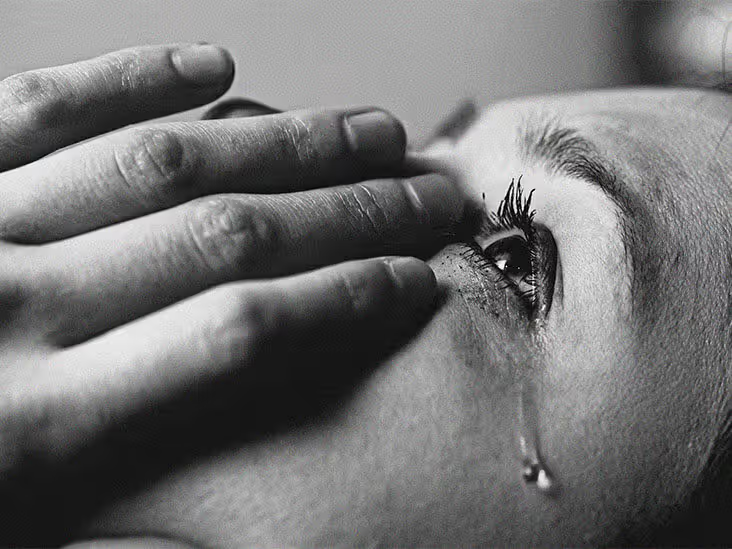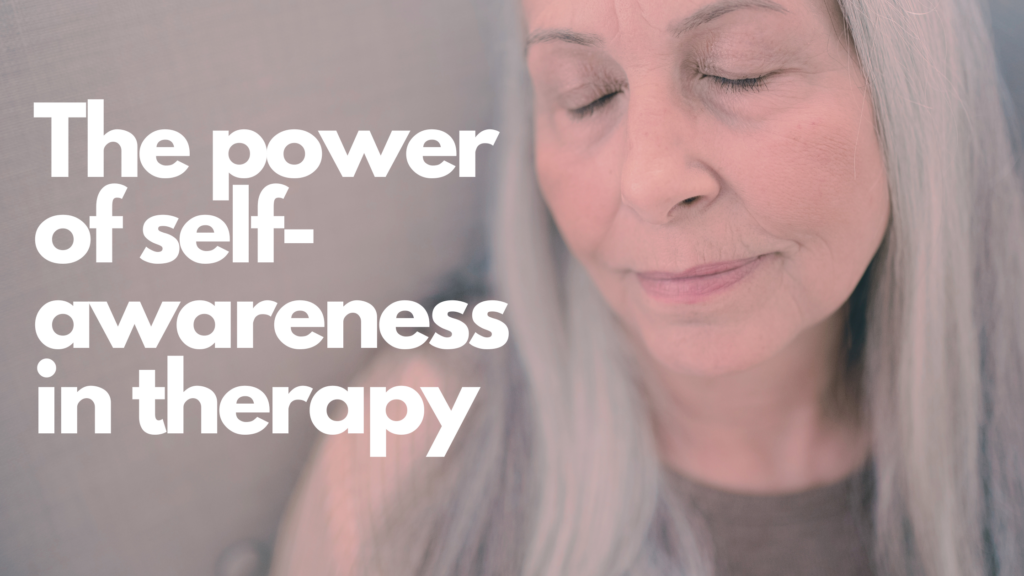Crying is a natural and often involuntary response to various emotions, including sadness, joy, frustration, or even relief. Despite the common misconception that crying is a sign of weakness, it actually holds numerous benefits for both our physical and mental well-being. Let's delve into the various advantages that shedding tears can offer.
As an adult, there remains space in your existence for an occasional heartfelt sob. Let's acknowledge the truth: The preceding eighteen months have been profoundly challenging. You might have found yourself shedding tears more frequently than before. This is entirely natural, and there's no reason for embarrassment. While swollen eyes and flushed cheeks following a crying session may not be enjoyable, professionals assert that there are indeed numerous advantages to shedding tears.
Emotional Release

One of the primary benefits of crying is its role in emotional release. When we cry, we expel pent-up emotions, such as stress, sadness, or anger, allowing us to experience a sense of relief and catharsis. It serves as a healthy outlet for processing and coping with intense feelings, ultimately leading to an improvement in mood.
Physical Health Benefits and Crying is good for your health

Crying isn't just beneficial for our emotional state; it also has positive effects on our physical health. Tears contain stress hormones and toxins, and when we cry, we release these substances from our bodies. This natural detoxification process can help alleviate physical symptoms associated with stress and tension, such as headaches or muscle strain.
Research has found that in addition to being self-soothing, shedding emotional tears releases oxytocin and endorphins. These chemicals make people feel good and may also ease both physical and emotional pain. In this way, crying can help reduce pain and promote a sense of well-being.
Crying can indeed have some health benefits. It's a natural way for your body to release stress hormones and toxins. Emotional tears, in particular, contain higher levels of stress hormones, so shedding them may help reduce stress. Additionally, crying can improve mood by releasing endorphins, the body's natural painkillers, and promoting a sense of relief. However, like many things, moderation is key. Excessive crying may indicate underlying emotional issues that require attention.
Mental Health Benefits

In addition to its physical benefits, crying offers significant advantages for mental health. It serves as a powerful tool for managing anxiety and depression, as it enables individuals to express and confront their emotions openly. By allowing ourselves to cry, we foster emotional well-being and create space for healing and growth.
Social Connection

Crying can also strengthen social bonds and foster a sense of connection with others. When we cry in front of someone, it demonstrates vulnerability and trust, deepening our interpersonal relationships. Moreover, witnessing someone else's tears often elicits feelings of empathy and compassion, strengthening the emotional connection between individuals.
As babies, we cried to get the attention of our caregivers to ensure our needs were met — food, clean diapers, comfort and the like.
As adults, crying with the right people and at appropriate times can similarly create connections with others. It’s a sign that we’ve lowered our defenses and are comfortable with being vulnerable — not in a sinister or manipulative way, but in a human-to-human experience-sharing way.
“When we’re in a comfortable situation and we’re processing events together and talking to each other about what’s going on and sharing our emotions, that can oftentimes tie us together,” Dr. Tworek notes. “It can be a way that we bond to one another by creating an atmosphere of human connection.”
Some researchers suggest that tears have a place in human evolution, too. For our ancestors, crying could have been a way to increase bonds within a community and limit aggressive or violent tendencies among groups.
Cathartic Effect

The act of crying itself can be cathartic, providing a sense of emotional release and purification. Tears symbolize the shedding of emotional burdens, allowing individuals to let go of negativity and embrace emotional healing. Crying serves as a powerful mechanism for processing trauma and moving forward with resilience and strength.
Crying can indeed be cathartic for many people. When we cry, we release pent-up emotions, stress, and tension. It can provide a sense of relief and help us process difficult emotions. Research suggests that crying may even trigger the release of endorphins, our body's natural feel-good hormones, which can contribute to a sense of well-being after a good cry. Additionally, crying can signal to others that we're in need of support, leading to social connection and comfort. However, it's important to note that the cathartic effects of crying can vary from person to person, and not everyone finds relief through tears.
Stress Reduction

Research has shown that crying can lower stress levels by reducing the concentration of cortisol, commonly known as the stress hormone, in the body. When we cry, our parasympathetic nervous system is activated, promoting relaxation and a sense of calm. This physiological response helps restore balance in our bodies and alleviate the detrimental effects of chronic stress.
Releases toxins and relieves stress
When humans cry in response to stress, their tears contain a number of stress hormones and other chemicals. Researchers believe that crying could reduce the levels of these chemicals in the body, which could, in turn, reduce stress.
Boosting Immunity

Surprisingly, crying may also boost our immune system. The release of stress hormones through tears can stimulate the production of endorphins, our body's natural painkillers, and mood elevators. Additionally, the activation of the parasympathetic nervous system during crying enhances our body's ability to fight off infections and illnesses, contributing to overall well-being.
Emotional tears also contain a hormone called prolactin, which helps reduce stressful feelings and boosts the immune system
Self-awareness and Growth

Crying facilitates self-awareness and personal growth by encouraging introspection and reflection. When we allow ourselves to cry, we acknowledge and honor our emotions, fostering a deeper understanding of ourselves. This heightened self-awareness empowers us to make positive changes in our lives and navigate challenges with resilience and grace.
Promotion of Communication

Crying can open channels for communication and foster authentic connections with others. By expressing our emotions through tears, we invite others to engage with us on a deeper level, promoting empathy and understanding. Tears transcend language barriers, serving as a universal means of communication that conveys our innermost feelings and experiences.
Enhancement of Mood

Tears contain chemicals that act as natural mood enhancers, providing relief from emotional distress and promoting a sense of well-being. Crying triggers the release of endorphins, which are neurotransmitters associated with feelings of pleasure and euphoria. As a result, shedding tears can alleviate mood swings and contribute to emotional stability.
Promotion of Resilience

Far from being a sign of weakness, crying is a powerful tool for building emotional resilience and coping with adversity. It allows us to process difficult emotions and experiences, strengthening our ability to bounce back from setbacks. By embracing our tears and acknowledging our vulnerabilities, we cultivate inner strength and resilience in the face of life's challenges.
Crying allows us to release and express our emotions, providing a cathartic release of built-up feelings such as sadness, frustration, or grief. It can help us process and cope with challenging experiences. Once you let it all out, your heart feels lighter. This also allows you to heal
Cognitive Benefits

Crying has been linked to improved cognitive function, including enhanced memory and problem-solving skills. When we cry, the brain releases oxytocin, a hormone that facilitates social bonding and cognitive processing. This neurochemical response promotes mental clarity and enables us to approach challenges with a greater sense of clarity and focus.
When should you seek help?
Crying in response to something that makes you happy or sad is normal and healthy. Don’t shy away from shedding tears if you feel the need to release. Excessive crying is something you should chat about with your doctor, however. If crying starts to interfere with your everyday activities, it may be a sign of depression.
Other symptoms of depression include:
- feelings of sadness or hopelessness
- feelings of irritability or frustration
- changes in appetite, or weight loss or gain
- lack of energy
- trouble sleeping or sleeping too much
- unexplained aches or pains
- thoughts of death or suicide
If you have thoughts of self-harm, call your local emergency services. If you live in the United States, you can also call the National Suicide Prevention Lifeline at 988.
How much should you cry?
Researchers at Tilburg University put crying under the microscope. Their results? On average, American women cry 3.5 times each month while American men cry around 1.9 times each month. The averages by country vary considerably. The average in America is on the higher end of the spectrum. Women in China, for example, only cry about 1.4 times each month. Men in Bulgaria reportedly cry a mere 0.3 times each month.
Is crying every day healthy?
Crying every day isn't necessarily unhealthy, as it can be a natural emotional release. However, if it becomes excessive or is a sign of underlying emotional distress, it's essential to address the root cause. Persistent feelings of sadness, hopelessness, or anxiety may indicate a need for professional support from a therapist or counselor. Emotional well-being is crucial, and seeking help when needed is a sign of strength, not weakness.
So, when is crying a problem?
While crying can be therapeutic, “crying can become a problem if the person finds themselves crying so often, or so uncontrollably, that it starts to interfere in their ability to conduct their daily lives,.
Crying is a healthy, NORMAL, human function that gives you the capacity to reduce pain, keep your eyes healthy & create support networks
You actually have different types of tears that perform different roles
Basal tears are your basic tears that keep your eyes nice and moist, they contain a fluid called lysozyme which has strong antimicrobial properties.
Reflex tears which are tears that happen due to a reaction to irritants like when you’re cutting onions or get something in your eyes
Emotional tears are tears triggered by emotions! These contain endorphins and oxytocin which ease pain as well as activate the parasympathetic nervous system.
Emotional tears not only have a calming & pain relieving effect on the body, they also contain stress hormones that naturally regulate the amount of cortisol in your body.
They also perform an important function of enlisting support when we need it most!
Crying is an attachment behaviour, which creates compassion & empathy in others, so when you’re in emotional or physical pain, others can support you.
Crying is never a sign of weakness, but actually a beautifully important function of human connection, self-soothing and health.
Conclusion
In conclusion, crying is far more than a mere display of emotion; it is a fundamental aspect of human experience with profound benefits for our health and well-being. From its role in emotional release and stress reduction to its impact on social connection and resilience, crying serves as a powerful mechanism for healing and growth. So, the next time you feel the urge to cry, embrace it as a natural and healthy expression of your emotions.
Frequently Asked Questions (FAQs)
- Is crying a sign of weakness?
- No, crying is a natural and healthy response to emotions, and it does not signify weakness.
- How often should one cry for optimal health benefits?
- There is no specific frequency for crying. It's essential to listen to your emotions and allow yourself to cry when needed.
- Can suppressing tears have negative effects on health?
- Yes, suppressing tears can lead to emotional suppression, which may have adverse effects on mental and physical health.
- Are there cultural differences in the perception of crying?
- Yes, cultural norms and values influence how crying is perceived and expressed in different societies.
- Should I seek professional help if I cry excessively?
- If crying significantly impacts your daily life or mental well-being, it may be beneficial to seek support from a mental health professional.
- Q: Is it healthy to cry often? A: Yes, crying frequently in response to emotions is a normal and healthy part of being human. It helps release tension and promote emotional well-being.
- Q: Can crying too much be harmful? A: While occasional bouts of intense crying are normal, excessive crying may indicate underlying emotional distress or a mental health concern. It's essential to seek support if crying becomes overwhelming or uncontrollable.
- Q: Are there any benefits to holding back tears? A: Holding back tears can lead to increased tension and emotional discomfort. Allowing oneself to cry when needed provides emotional release and can prevent physical and psychological strain.
- Q: How can I support someone who is crying? A: Simply being present, offering comfort, and listening without judgment can provide valuable support to someone who is crying. It's essential to respect their emotions and offer assistance if needed.